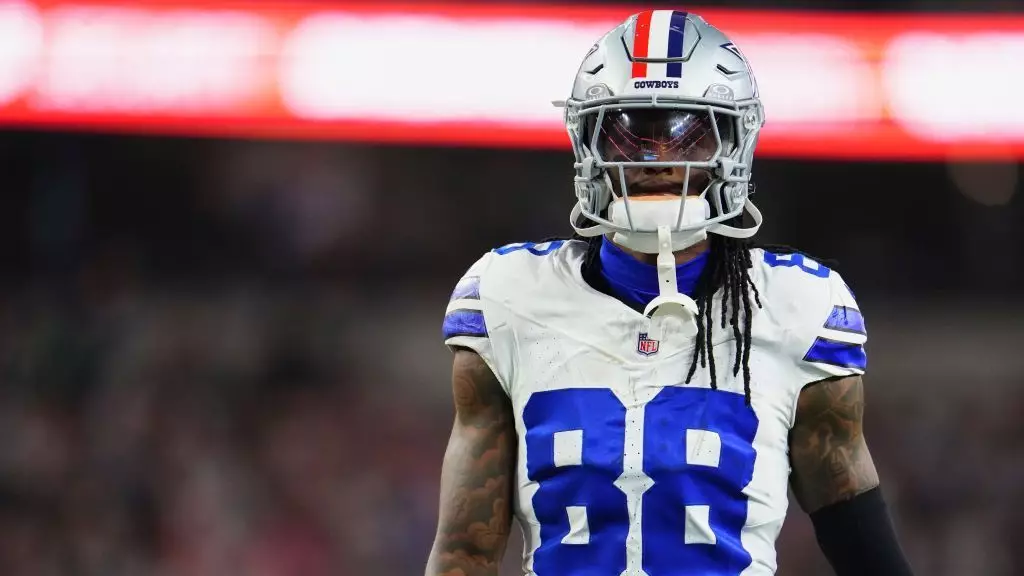In the world of sports, seemingly minor factors can dramatically affect a game’s outcome. For the Dallas Cowboys, a recent clash against the Philadelphia Eagles underscored how an unexpected element—sunlight—can alter the landscape of a game. While the final score of 34-6 is a glaring indication of a team overwhelmed, the discussion about the physical conditions existing on the field remains unresolved. This article explores not only the implications of this incident but also fans’ expectations of the organization, management’s responsibility, and the broader narrative about adapting to environmental challenges.
The Cowboys were on the verge of taking the lead against the Eagles early in the game. Quarterback Cooper Rush had a prime opportunity, aiming for an open CeeDee Lamb in the end zone on a critical second-and-goal situation. However, Lamb’s inability to see the pass due to the sun’s glare resulted in another field goal instead of a touchdown. The choice between an early flourish and a debilitating setback illustrates how fleeting opportunities can shift momentum not just within a game, but across a season. Even though only seconds passed, the impact was substantial; the Cowboys would not score again, leaving the player and fans to wonder how much the environmental factors influenced their performance.
Following the game, Cowboys owner Jerry Jones addressed the inconvenient subject of sunlight without addressing potential solutions. His dismissal of the idea to install curtains further compounded the narrative that he prefers to sidestep responsibility. “We do know where the damn sun’s going to be at our own stadium,” he said, illustrating his frustration, yet revealing a disconnect with the practical challenges the players face. Jones’ sardonic remark about tearing down the stadium instead of exploring potential quick-fix solutions reflects a stubbornness that could be seen as unsatisfactory by fans yearning for progress. It leaves open the question of whether an organizational commitment to player welfare extends beyond mere words.
Critically, the incident raises questions about how the Cowboys approach game preparation. Head coach Mike McCarthy’s insistence on conventional practices places teams in a bind. The Cowboys do not practice at AT&T Stadium, which results in players, like Rush and Lamb, facing real-time challenges during play rather than having the opportunity to rehearse in the stadium’s unique conditions. The reluctance to adapt plays or strategies based on environmental constraints suggests a broader communication gap within the organization. Understanding the field’s dynamics should be as imperative as strategy.
CeeDee Lamb’s reaction after the game points to an acute awareness of how physical elements can hinder performance. His immediate acknowledgment of the sun’s inconvenience indicated he was not alone in identifying the problem. Lamb’s eagerness to support the idea of curtains reinforces a notion that players value their competitive edge. The dissonance between players’ practicality and management’s dismissive rhetoric highlights a substantial oversight in player experience. In a professional sport where every inch counts, management would benefit from aligning with the players to enhance their home-field advantage.
While the incident ignited debates regarding sunlight at AT&T Stadium, it accentuates a larger issue in sports management. Creating an environment conducive to players excelling must become a priority. Instead of digging in their heels on established practices, organizations should embrace innovative solutions that consider evolving challenges. Whether it be curtains, modified scheduling, or even alternate practice locations, strategic changes will likely prevent a repeat of embarrassing performances due to manageable external factors.
The Cowboys’ recent experience demonstrates how environmental elements intersect with sports performance and organizational dynamics. As discussions around sunlight evolve, it serves as a critical reminder for teams everywhere: adaptation is essential, and executive leadership must pioneer a proactive, player-centric approach to ensure on-field success. Would it take another disappointing game for Jones and McCarthy to embrace change? Only time will tell.


Leave a Reply